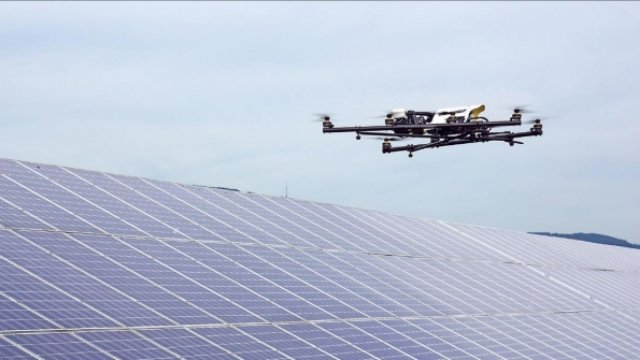Accelerating deployments of solar photovoltaics (PV) around the world are placing increasing emphasis on cost-effective operations and maintenance (O&M) practices that can enhance lifecycle plant economics.
Particularly for large utility-scale systems—which comprise approximately 45% of global cumulative installations and can exceed several hundred MW, spanning tens of thousands of modules and thousands of acres—a range of targeted, streamlined, and automated preventative maintenance activities are being explored for their cost-benefit returns.
One such approach under investigation by utilities, asset owners, and O&M service providers is the use of Unmanned Aircraft System, or UAS. These devices can currently perform a variety of PV-related tasks, including visual imaging (of modules, wiring, and other plant components), infrared thermography, and vegetation monitoring that have the potential to update largely manual conventional processes and more efficiently identify and diagnose PV system performance issues.
Moreover, future UAS capabilities, such as data analytics through pattern recognition and change detection, offer greater potential economic upside by introducing predictive methods for gauging plant health and optimizing strategic O&M responses. Given falling system costs and technical advancements, aerial robotics offer broad potential benefits both for PV O&M and other applications.
Read full article from EPRI: “Utilitizing Unmanned Aircraft Systems as a Solar Photovoltaics Operations and Maintence Tool”
Source: Transmission and Distribution

